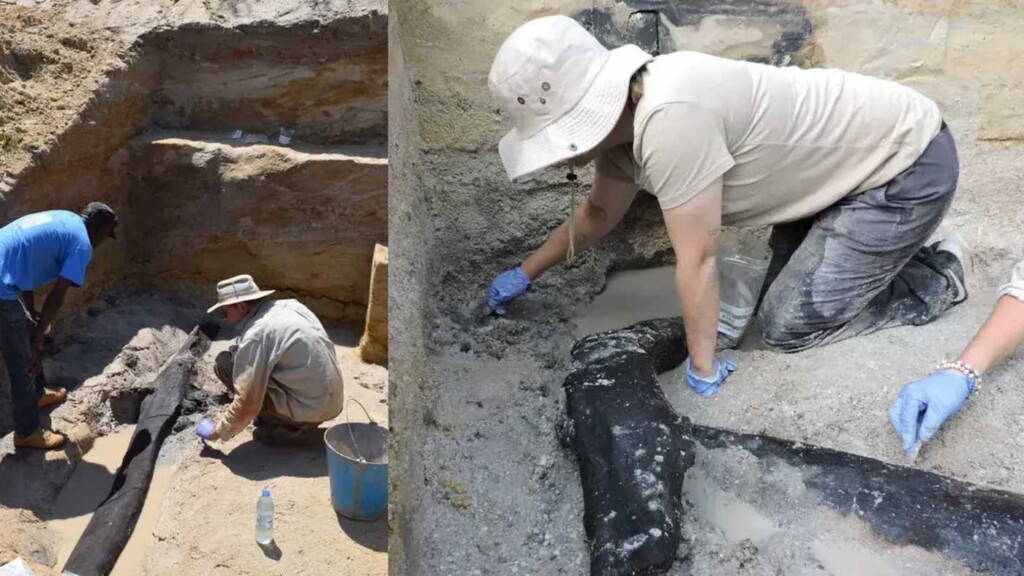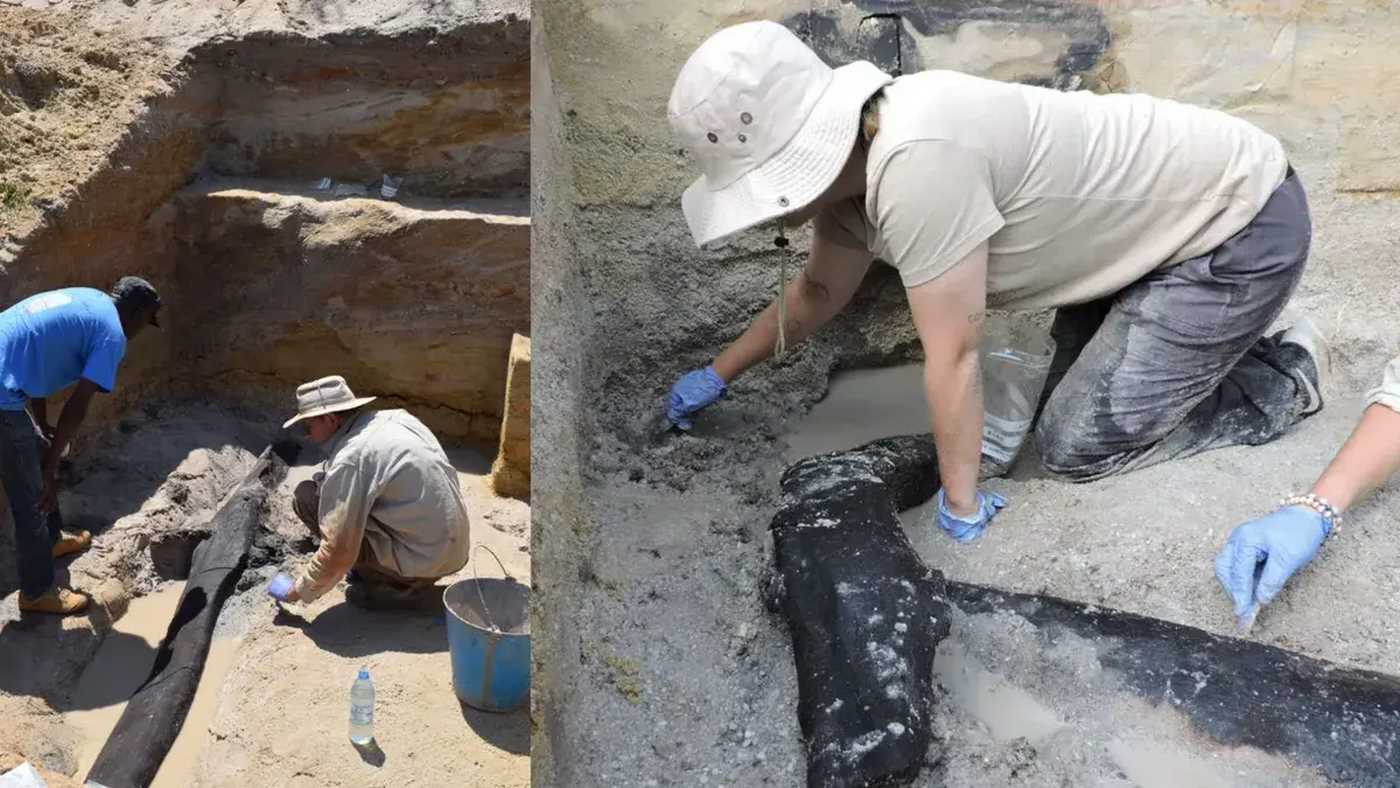
In a true paradigm shift, persevered timbers show that early man, and potentially older species than Homo sapiens, were building wooden structures 476,000 years ago.
Wikipedia lists the earliest carpentry assemblage ever found previously as a water well cover carved from oak boards from 5,600 BCE. The oldest wooden tool ever found was a carved spear from about 416,000 years ago.
These 5-foot-long logs had clear signs of woodworking with stone tools, with the end of one set atop another at a right angle. There are notches cut into the ends to allow them to fit into one another, a technique that makes them seem a little like Lincoln Logs.
Nothing of the sort has ever been found from this period and is rarely found from the Neolithic period.
Professor Larry Barham at the University of Liverpool led the excavations on a river bank near Kalambo Falls in the southern African country of Zambia, and said that it changed how he views our early ancestors.
“This find has changed how I think about our early ancestors, they made something new, and large, from wood,” Professor Barham told the BBC. “They used their intelligence, imagination, and skills to create something they’d never seen before, something that had never previously existed.”
While unlikely to have been a hut or a cabin, the researchers believe it could have been part of a platform that hosted other structures on top of it, or, because of its proximity to the river, a kind of jetty to go fishing from.
MORE OF OUR EARLY HISTORY: Prehistoric Human Footprints Unearthed in Spain are Nearly 300,000 Years Old and Unique in All of Europe
While ancient wooden digging sticks were found during the excavations, no bones of any hominid have been unearthed. Homo sapiens fossils begin to appear around 315,000 years ago, leading to the possibility that we either haven’t dug in the right place for Homo sapiens, or a previous species of our genus was intelligent enough to use stone tools to perform basic carpentry techniques.
“But it could be a different species—[perhaps] Homo erectus or Homo naledi—there were a number of hominid species around at that time in southern Africa,” said Geoff Duller, professor of geography at the University of Aberystwyth, and co-author on the study.
SHARE This Quite Extraordinary Back-Dating With Your Friends…




















